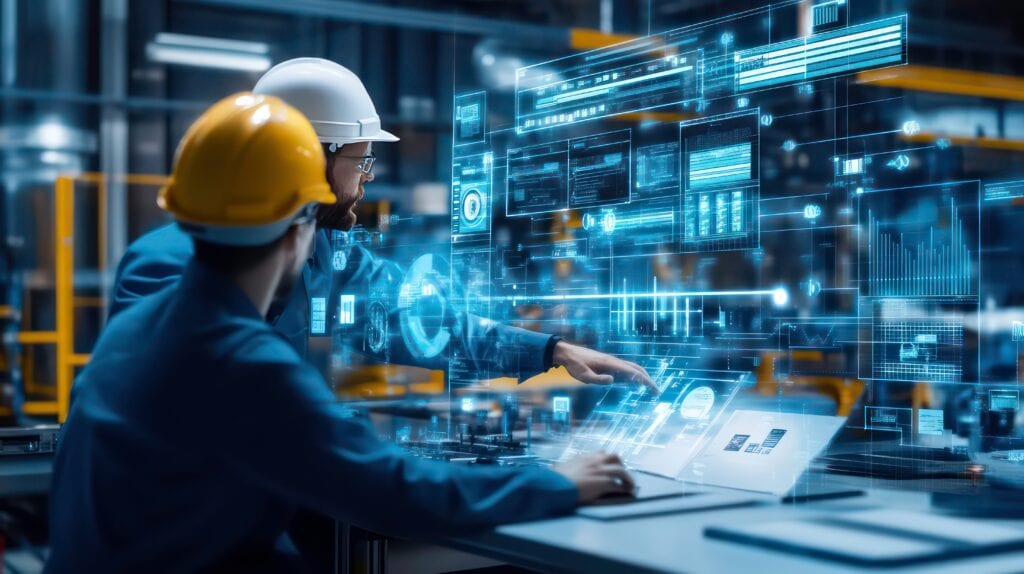Manufacturing is undergoing a massive digital transformation. From predictive maintenance and quality inspection to supply chain optimization and robotics, AI is powering the factories more and more. But even the smartest AI models don’t stay accurate forever. Machinery ages, production lines shift, market demand fluctuates, and environmental conditions change. AI must adapt to remain effective.
This is why AI model maintenance is essential for any manufacturing operation using machine learning or automation intelligence. Without ongoing maintenance, even the most advanced model can degrade quickly, leading to costly downtime, scrap, and safety risks.
In this blog, we break down what AI model maintenance looks like in the manufacturing world, why it matters, and how to build a reliable, long-term strategy to keep your smart factory running efficiently.
What Is AI Model Maintenance?
AI model maintenance refers to the continuous process of monitoring, updating, and improving AI systems after they’ve been deployed on the factory floor. This can include predictive maintenance models for equipment health, demand forecasting algorithms, energy consumption models, and safety monitoring systems.
Unlike static software, AI models learn patterns from historical data. When real-world conditions evolve, the model’s predictions can drift away from reality, which is risky in a high-precision, high-volume environment like manufacturing.
Why Model Maintenance Matters in Manufacturing
1. Changing Production Conditions
Factors such as new materials, updated machine configurations, tool wear, or seasonal conditions can shift what the AI “expects.” For example:
- A vision model trained on new parts may fail to detect defects on slightly older ones.
- A machine health model may misread vibration data after a machine upgrade.
Maintenance keeps AI aligned with real-world conditions.
2. Preventing Costly Errors
A drifting model can cause:
- Increased scrap rates
- False alarms in predictive maintenance systems
- Missed safety hazards
- Slower cycle times
- Incorrect inventory forecasts
Routine model performance checks help prevent these expensive disruptions.
3. Improving Reliability and Safety
Manufacturing environments demand precision. AI that drifts can misclassify defects, overlook anomalies, or recommend incorrect machine settings all posing safety and compliance risks.
4. Adapting to Market & Supply Chain Variability
Demand forecasting models can quickly become inaccurate during:
- Market fluctuations
- Supplier delays
- Production schedule changes
Model maintenance ensures your forecasts stay accurate and your operations remain agile.
Preventing Model Drift
To prevent AI model drift over time, manufacturers rely on continuous performance monitoring to track accuracy, false positives, throughput, and changes in sensor or image quality. Drift detection systems compare live production data with the original training data to identify when the AI model is no longer seeing the same patterns it was designed to interpret. Once drift is detected, retraining becomes essential. Depending on the operation, retraining may be scheduled at regular intervals, triggered by specific events like equipment upgrades or material changes, or conducted continuously for high-speed or highly variable production environments. Every updated model must also be versioned and documented so manufacturers can trace decisions, ensure compliance with quality standards, and roll back models if needed.
Before a newly retrained model is deployed to a live production line, it must be carefully tested. Manufacturers often run updated models in shadow mode, comparing predictions with the current system without affecting actual production. Others use holdout datasets, A/B testing, or multi-variant validation to ensure performance is consistent across product types, shifts, and environmental conditions. Safety, reliability, and compliance are paramount, so validation cannot be rushed. Increasingly, manufacturers are turning to MLOps frameworks, which automate data ingestion, model training, deployment, and monitoring. This reduces manual workload and ensures that AI models can keep up with dynamic factory environments.
Best Practices for Sustainable Maintenance
Sustainable AI maintenance in manufacturing requires close collaboration between data teams and plant operators. Operators often detect subtle changes like unusual vibrations, shifts in material texture, or minor alignment issues before sensors register them. Using operator feedback to refine models makes AI systems more robust and grounded in real-world expertise. Manufacturers also benefit from designing their AI systems with variability in mind, training models on data from multiple batches, shifts, machines, and lighting conditions. Thorough documentation ensures quality audits are smooth, root-cause issues are easier to identify, and regulatory requirements are met.
Ultimately, building an AI model for manufacturing is only the first step. The real value comes from maintaining it over time. Organizations that invest in ongoing AI model maintenance preserve accuracy, reduce downtime, improve product quality, and keep operations safe and efficient. By treating AI systems with the same care and attention as physical equipment, manufacturers can ensure their smart factories continue to operate at peak performance.
How FocustApps Can Help
At FocustApps, we are committed to building solutions that stand the test of time. Our team has a depth of experience in creating and maintaining AI Models. When implementing a solution, we ensure your data is clean by using predictive cleansing models to predict and correct inconsistencies. We ensure your model registry is auditable and has version control built in. We also work with your team to develop a lifecycle management plan for routine retrainings to ensure model accuracy. AI model drift can and should be avoided. Contact our team today to learn more about our AI modeling and how your business can use AI effectively.


